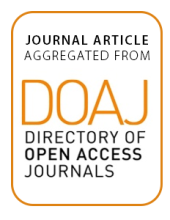Land Library Search
Through our robust search engine, you can search for any item of the over 73,000 highly curated resources in the Land Library.
If you would like to find an overview of what is possible, feel free to peruse the Search Guide.
/ library resources
Showing items 1 through 9 of 14.Predominan en el medio académico y político las nociones "naturalistas" sobre la segregación social del espacio en las ciudades latinoamericanas.
Demographic change suggests substantial effects on future societal demands on agricultural landscape use and thus on rural areas.
Cet article étudie la confrontation des constructions identitaires locales et du tourisme culturel dans le Salento, une région des Pouilles où, depuis une dizaine d’années, des politiques culturelles et un marketing territorial avisés ont relancé le tourisme.
The Conservation Reserve Program (CRP) is a voluntary set-aside program in the United States designed to amelioratesoil erosion, control crop overproduction, enhance water quality, and provide wildlife habitat by replacing crops with other forms of land cover.
Cities are not socially homogenous, but divided into socially and structurally differentiated sub-units. Likewise, the individuals of a community, city or neighbourhood present specific behavioural patterns and uses with respect to their public green areas.
In this paper, 1) a delineation of main theoretical, methodological and applicative issues of landscape ecology, 2) a comparison between landscape and ecosystem ecology, 3) a critical overview of actual limits of landscape ecology, are depicted.
Este artículo propone algunas reflexiones críticas sobre la tradición creciente de implementación de políticas públicas de regularización de asentamientos informales en áreas urbanas, con el objetivo de contribuir para que el proceso de crecimiento informal de las ciudades latinoamericanas sea en
This paper takes the move from the uncertainty surrounding ecosystem thresholds and addresses the issue of ecosystem-state assessment by means of ecological integrity indicators and ‘ecological risk‘.
Cuando la expansión de Santiago se efectuó sobre los sectores rurales circundantes y también, en los últimos decenios, en polígonos altos en busca de mejores condiciones ambientales y de calidad de vida, también impensadamente, se efectuó hacia áreas de mayor riesgo.

